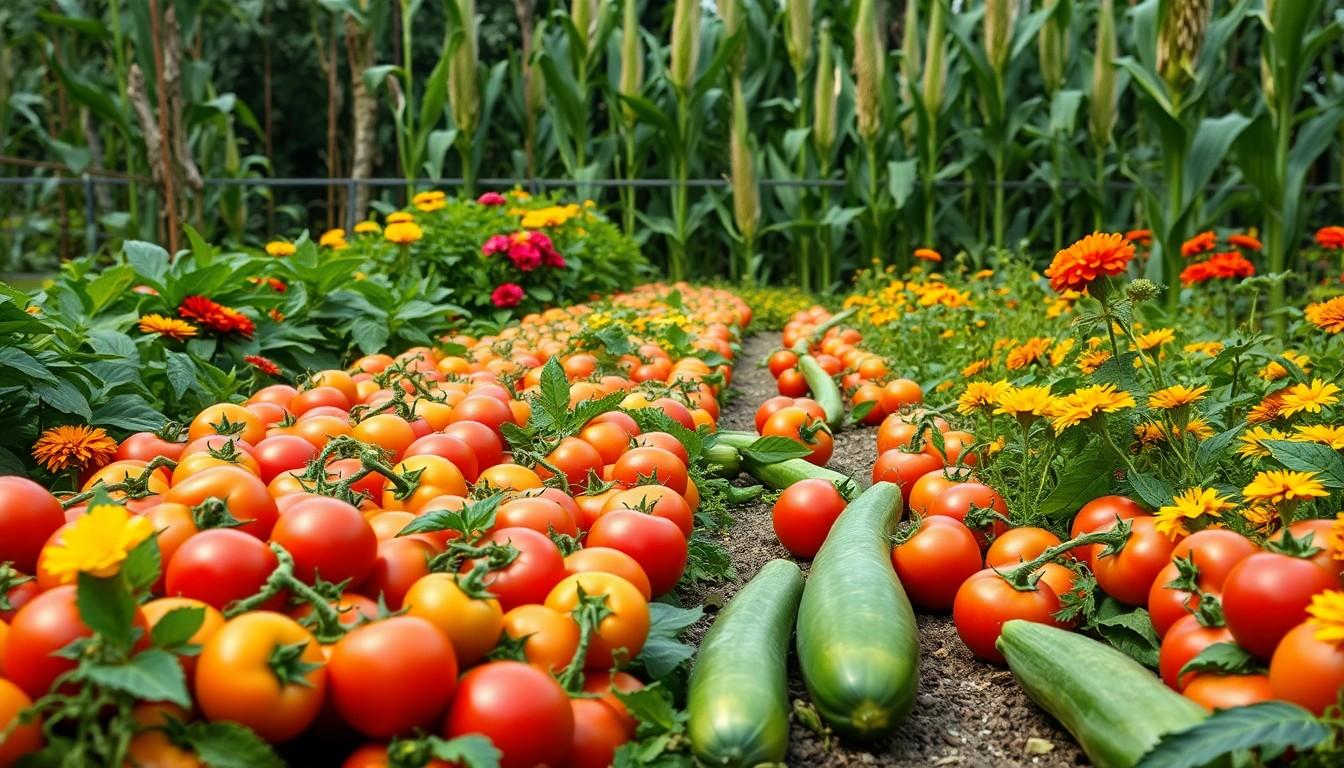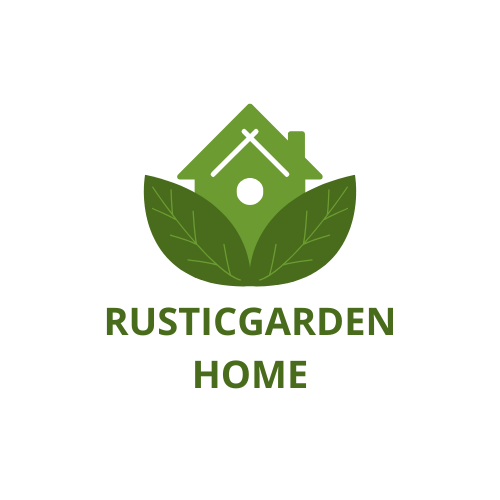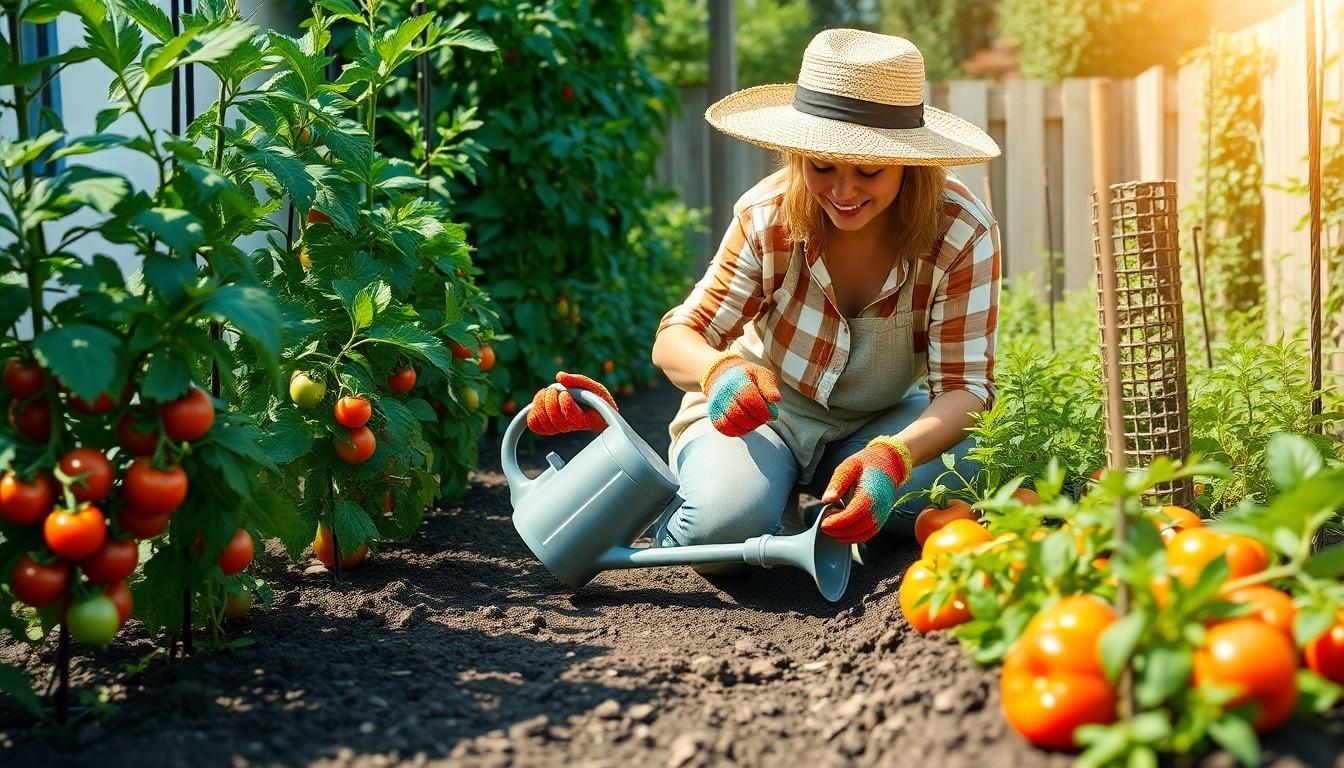Summer’s here, and so is the perfect opportunity to unleash a vibrant vegetable garden that’ll make even your neighbor’s tomatoes green with envy. Imagine plucking sun-ripened veggies straight from your backyard, all while basking in the sunshine. It’s not just gardening; it’s a summer adventure that promises fresh flavors and a workout that even your gym membership would applaud.
Planning Your Summer Vegetable Garden
Planning a summer vegetable garden requires careful consideration of location and sunlight. Key factors ensure a successful and productive harvest.
Choosing the Right Location
Selecting an ideal spot for the garden is crucial. Areas with well-drained soil promote healthy root growth. Needing at least six hours of direct sunlight daily influences the choice of location. Proximity to a water source simplifies irrigation tasks. Avoiding shaded spots from buildings or trees enhances plant growth. Accessibility for maintenance tasks allows easier care of the garden.
Understanding Sunlight Requirements
Sunlight drives plant growth and vegetable production. Most summer vegetables thrive in full sun, requiring around six to eight hours of direct sunlight daily. Acknowledging the specific needs of each type of vegetable supports optimal growth. Tomatoes and peppers flourish in these conditions, while leafy greens tolerate partial shade. Monitoring sunlight patterns throughout the day guides the placement of plants accordingly. Ensuring proper spacing prevents overcrowding and maximizes exposure to sunlight.
Selecting Summer Vegetables

Choosing the right vegetables can greatly influence the success of a summer garden. Certain crops thrive in warm weather, providing delicious bounty.
Best Warm-Weather Crops
Tomatoes, peppers, and cucumbers are among the most favored warm-weather crops. Each of these vegetables offers unique flavors and garden appeal. Beans flourish quickly, adding nutrients back to the soil. Corn grows tall and demands full sun, making it a stunning addition. Squash varieties, such as zucchini, produce abundantly, providing versatile culinary options. Carrots and beets, though cooler-tolerant, can also be grown in the early summer. Prioritizing these vegetables benefits both flavor and yield.
Companion Planting Strategies
Effective companion planting can enhance growth and deter pests. Basil pairs well with tomatoes, improving their flavor and health. Marigolds planted alongside vegetables can repel harmful insects. Corn and beans work symbiotically, allowing beans to climb and fix nitrogen in the soil. Cucumber and radish create a balanced garden environment, with radishes maturing quickly and clearing space for cucumbers. Grouping plants this way optimizes resources and offers more abundant harvests.
Preparing the Soil
Proper soil preparation sets the foundation for a thriving summer vegetable garden. It ensures plants receive adequate nutrients and support for healthy growth.
Soil Testing and Amendments
Conducting a soil test provides insight into nutrient levels, pH balance, and organic matter content. Testing kits are available at garden centers or through local agricultural extensions. Once your results arrive, amend the soil based on its needs. For instance, adding compost boosts organic matter, while lime raises pH levels in acidic soils. Incorporating potassium-rich fertilizers benefits root crops, like carrots and beets, while nitrogen promotes leafy growth for vegetables such as lettuce. Adjustments tailored to specific nutrient deficiencies create a strong, fertile base for crops.
Tilling and Irrigation Techniques
Tilling the soil improves aeration and prepares it for planting. Using a rototiller helps break up compacted soil, allowing roots to penetrate easily. Aim for a depth of around 12 inches to enhance drainage and root development. After tilling, employ irrigation techniques to maintain moisture levels. Drip irrigation systems deliver water directly to plant roots, minimizing waste. Alternatively, soaker hoses can spread water evenly across rows. Regularly check moisture levels to prevent over or underwatering. Effective tilling and irrigation techniques ensure optimal growing conditions for summer vegetables.
Planting Techniques
Planting techniques are fundamental for a successful summer vegetable garden. Options include seed sowing and transplanting, each with unique advantages.
Seed Sowing vs. Transplanting
Seed sowing involves planting seeds directly in the soil. This method often results in stronger root systems as plants establish in their final location. Alternatively, transplanting involves starting plants indoors or in a controlled environment before moving them outdoors. This technique provides a head start, particularly for long-growing vegetables like tomatoes and peppers. Each option offers distinct benefits, so gardeners should consider their specific crops and local climate conditions when deciding.
Timing Your Planting for Success
Timing affects garden yield significantly. Most summer vegetables require soil temperatures to reach at least 60°F before planting. For optimal growth, seek to plant crops such as squash and beans after the last frost date. Additionally, staggered planting can extend harvest periods. This approach allows for continuous crop availability throughout the summer. Gardeners must monitor local weather patterns to ensure successful planting and avoid frost damage.
Garden Maintenance
Maintaining a summer vegetable garden requires attention to detail and regular care. Effective practices ensure a bountiful harvest.
Watering and Fertilization Tips
Watering vegetables consistently promotes healthy growth. Deep watering encourages roots to grow stronger. Aim for 1 to 1.5 inches of water weekly, adjusting based on rainfall. Applying mulch helps retain moisture in the soil. Fertilization also plays a critical role in providing essential nutrients. Utilize a balanced fertilizer high in nitrogen during the early growth stages. For fruiting vegetables, switch to a phosphorus-rich fertilizer as they mature. Regularly testing soil for nutrient levels can guide fertilizer usage effectively.
Pest and Disease Management
Managing pests and diseases involves vigilance and prompt action. Inspect plants frequently for signs of infestations or disease symptoms. Beneficial insects like ladybugs and lacewings naturally control pest populations. Additionally, keeping the garden clean and debris-free reduces disease likelihood. Organic treatments such as neem oil or insecticidal soap effectively combat common pests. Rotate crops each season to help minimize soil-borne pathogens. Recognizing and addressing potential issues early helps preserve plant vitality and overall garden health.
Harvesting Your Crops
Harvesting summer vegetables presents a rewarding moment for gardeners. Recognizing the right time yields the best flavors and textures.
When to Harvest Summer Vegetables
Timing plays a crucial role in harvesting. Tomatoes are best when fully colored and slightly firm. Bell peppers should ideally be harvested when they reach full size and before they start to wrinkle. Cucumbers thrive if picked while still small, around 6 to 8 inches. Beans require harvesting when pods are plump, but before they turn yellow. Corn is ready when kernels are fully formed, and the silks begin to brown. Checking for doneness regularly ensures vegetables remain fresh and tasty.
Best Practices for Storing Fresh Produce
Proper storage significantly extends vegetable freshness. Tomatoes thrive at room temperature away from direct sunlight. Cucumbers prefer a cool environment, ideally in the fridge. Placing peppers in a paper bag helps them breathe and retains moisture. Leafy greens benefit from being wrapped in damp paper towels and stored in a perforated bag. Beans must be refrigerated in a breathable container and consumed within a few days. Using these methods maximizes the shelf life of harvested vegetables, keeping them delicious longer.
Conclusion
Creating a summer vegetable garden offers an enriching experience that combines the joys of gardening with the rewards of fresh produce. By carefully planning the garden layout selecting the right vegetables and maintaining proper care gardeners can enjoy a bountiful harvest. The satisfaction of harvesting sun-ripened vegetables not only enhances meals but also fosters a deeper connection with nature.
With the right techniques in place gardeners can transform their backyards into vibrant spaces filled with flavor and life. As the summer unfolds the garden becomes a source of pride and nourishment bringing joy and health to those who cultivate it. Embracing this journey can lead to lifelong gardening habits and a deeper appreciation for homegrown food.

